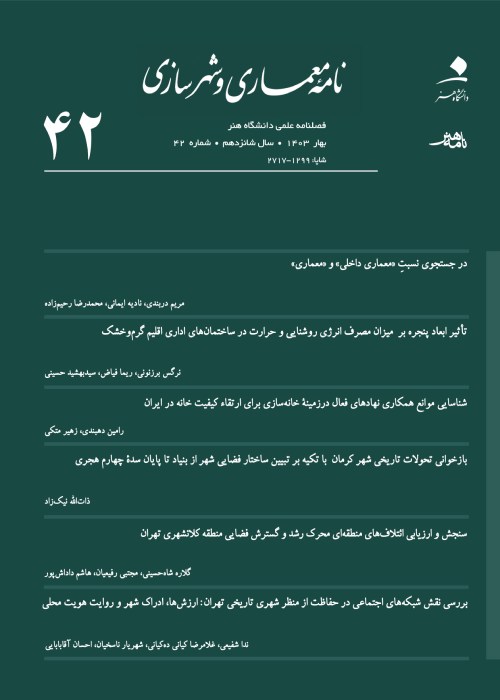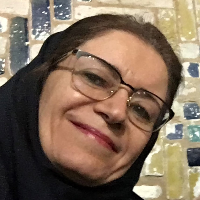Urban Change and Its Thermal Impacts Case Study: Isfahan
Author(s):
Abstract:
Increased speed of life has changed the cities in different ways and has caused many consequences. One of them is heating intensity in the cities compared with their surroundings. Heating stress has some different impacts on residents, from residents health to economic consequences. Their health is in danger because of thermal stress, greenhouse gasses, and pollution, and there would be economic consequences upon peoples life, due to increasing energy consumption. Thus, controlling urban temperature is an important factor in the design process. Urban design with its tools including urban morphology can play an imperative role in the passive cooling design. Isfahan has been selected with regard to its climate and hot summers, its urban changes in recent years and droughts. The thermal impact of changing urban morphology is an object of this study. Two phases have been designed in this study. In the first phase, comparison of land surface temperature, LST, were conducted in years 2000 and 2014 in Isfahan. In this regard, satellite images of Landsat 7, ETM in Envi 4.7 were used. Six districts were selected with maximum differences in LST between the years of 2000 and 2014. The changes in the natural environment have been studied by urban greenery and water, and built environment including sky view factor, closeness and materials. In the second phase of the study, a field measurement was conducted in the coolest and the hottest districts. Selecting a base point in each area and comparing the measurement points with this reference point illustrated the morphological impact in each point. The increasing of 562 ha of the hot spaces of the city (>40°C) in 14 years of study illustrated that the city had clearly become warmer. Furthermore, the maximum alterations were seen in urban greenery (NDVI) and water, which emphasizes their impact on heating of the city. Due to drying up the main river of the city, i.e. Zayandeh Rood, and its branches, i.e. Madies, the thermal surface has increased dramatically. Besides, decreased water has affected different parameters in thermal comfort. Moreover, 14% decrease of urban greenery has an important role in increase of surface and air temperature. The consequence of changing urban greenery and its thermal impact in some districts with more vegetation in 2014 than 2000 and some districts with less greenery have been approved in this study. In-built environment parameters, the vacant land or a large areas of asphalt like large squares were two important factors, especially in surface temperature. These impacts in the historical district of Isfahan, created very hot points in this areas. Inferior materials for insulations were another factor which has affected the LST. Sky view factor as an undeniable factor in thermal comfort has been changed between 2000 and 2014. Although in some districts the SVF has decreased, mainly by increasing the height of buildings, in other districts the SVF have increased due to cutting the shading trees. Decreasing SVF especially by shading trees is recommended in this study. The most important result of this study is showing the impact of urban designers role in heat mitigation in the cities by controlling urban morphology.
Keywords:
Language:
Persian
Published:
Journal of Architecture and Urban Planning, Volume:9 Issue: 17, 2017
Pages:
155 to 171
magiran.com/p1654297
دانلود و مطالعه متن این مقاله با یکی از روشهای زیر امکان پذیر است:
اشتراک شخصی
با عضویت و پرداخت آنلاین حق اشتراک یکساله به مبلغ 1,390,000ريال میتوانید 70 عنوان مطلب دانلود کنید!
اشتراک سازمانی
به کتابخانه دانشگاه یا محل کار خود پیشنهاد کنید تا اشتراک سازمانی این پایگاه را برای دسترسی نامحدود همه کاربران به متن مطالب تهیه نمایند!
توجه!
- حق عضویت دریافتی صرف حمایت از نشریات عضو و نگهداری، تکمیل و توسعه مگیران میشود.
- پرداخت حق اشتراک و دانلود مقالات اجازه بازنشر آن در سایر رسانههای چاپی و دیجیتال را به کاربر نمیدهد.
In order to view content subscription is required
Personal subscription
Subscribe magiran.com for 70 € euros via PayPal and download 70 articles during a year.
Organization subscription
Please contact us to subscribe your university or library for unlimited access!



